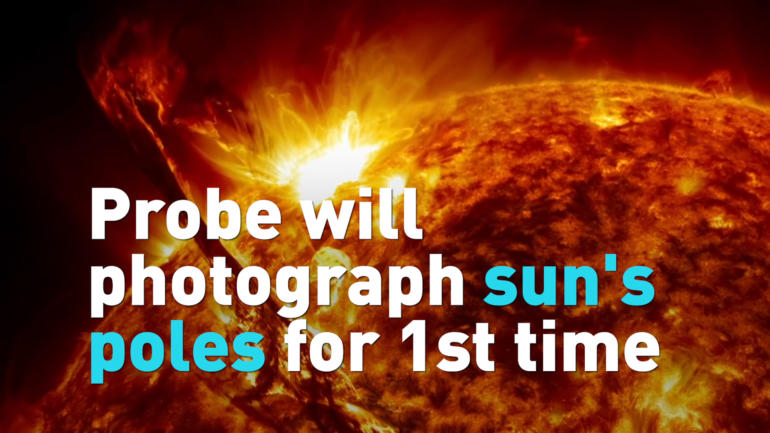If all goes to plan, humans will see the sun’s north and south poles for the first time in history.
On Sunday night, NASA and the European Space Agency launched the Atlas V rocket.
The Solar Orbiter is on a 7-year mission and it will reach its primary orbit around the sun in 2022.
The mission includes 22 close approaches to the sun and will get closer than Mercury is to the sun.
It has a titanium heat shield that withstands temperatures up to 500°C (900°F).
Cameras will peep out of holes at special times to photograph the sun’s atmosphere and outflow of material.
It will also measure electric and magnetic fields and passing particles and waves.
To get to the sun, the probe will use gravity assists from Venus and Earth.
Those assists will shoot the orbiter outside the area of the Sun’s equator.
This is known as the ecliptic plane, and it’s where Earth and other planets orbit the sun.
It’s also where all satellites have traveled — But it has an incomplete view of our star.
The data collected will help scientists figure out the sun’s mysterious magnetic field.
Every 11 years the sun’s north and south poles switch places.
Just before the switch, solar activity increases and powerful bursts fly into the atmosphere.
These bursts could hurt satellites and astronauts.
The Atlas V builds on the 1990 Ulysses mission that also left our ecliptic plane.
But back then, it only took measurements, not photographs.
 CGTN America
CGTN America
